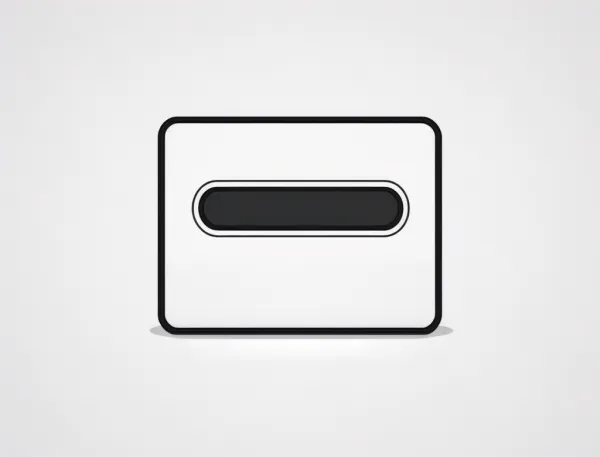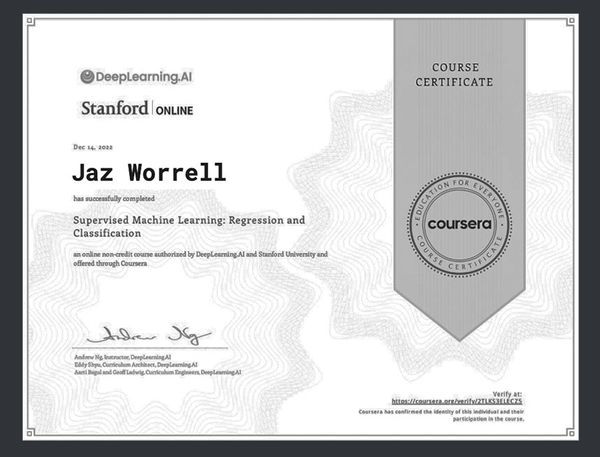It all seemed to start with chat-GPT back in November. The first specs of an open source, free AI language model graced the internet. Once the media got hold of it, it was everywhere. News, magazines, videos, articles – everyone wanted to showcase how it could write a script and after an interesting piece of content they would drop the ‘bomb’: “This whole video was actually written by chat-GPT’. Okay we get it.
I’m yet to write my thoughts about chat-GPT to paper and delve a bit deeper into how I’ve been using it to turbocharge my education and business, but something I wanted to chat about today is the technology race currently underway. I already spoke about how having no artificial intelligence in your business could be effecting sales…so it’s curious to see how in only 6 months the term, the functionalities and the ‘benefits’ are seemingly EVERYWHERE.
OpenAI & Artificial General Intelligence (AGI)
Commercially, OpenAI seems to be where everything started. Putting the MANY other applications of AI and machine learning aside (recommendation engines in Netflix, virtual assistants like Siri or Alexa, image recognition for Facebook or self-driving cars), chat-gpt was the language model that made ordinary people stand up and pay attention. Until then, AI applications we’re being built by ‘nerds’ and utilised by the unknowing. It was a term that was filled with unknown and visions of a robot-ruled dictatorship.
Elon musk has commented many times of the caution required when developing such technology, but a model that could converse like a human, understand the conversation, context and solve your homework was FAR too exciting. The world went mad.
“I’m a little worried about AI stuff. I think it’s something we should be concerned about,” Musk said. “We should need some kind of regulatory authority or something, overseeing AI development and making sure it’s operating within the public interest”-Elon Musk
Operating within the public interest? Welcome OpenAI.
A bit of background – OpenAI were built to build and plan for AGI. So what is AGI?
AGI stands for artificial general intelligence, which refers to an AI system that possesses intelligence that is comparable to human beings in terms of its ability to understand, learn, reason, and adapt to new situations. AGI is considered by many to be the next frontier in the development of artificial intelligence, with potential applications in fields such as healthcare, education, and robotics. OpenAI is a company that was specifically built to develop and plan for AGI. –Craft Assistant
They discuss the plans, benefits and potential issues with this approach extensively on their website. Something interesting was that “creating AGI will require huge amounts of compute and thus the world will know who is working on it”. This is super important and goes a long way when ‘policing’ and controlling the technology. Thankfully ‘it seems like the original conception of hyper-evolved RL agents competing with each other and evolving intelligence in a way we can’t really observe is less likely than it originally seemed’. – OpenAI, Planning for AGI and beyond.
With vastly improved responses from Chat-GPT, OpenAI quickly became a threat to the King of search; Google. How could voice assistants such as Siri and Alexa be so trash when there was technology like this available? That’s what I thought! Now I no longer have to wade through pages of google results to find what I need. The answer is right here. (SLIGHTLY similar to google snippets, but better!) Tech businesses had to respond and this is what this post will cover.
Let’s take a look at arguably the most exciting week in AI development. The latest release of Chat-GPT 4, PaLM-E from Google, Microsoft 365 integrations and a bunch of software development/ partnerships. Let’s go:
Chat GPT-4
GPT-4, the successor to GPT-3, boasts several significant improvements. With a larger model size and more diverse training data, GPT-4 demonstrates enhanced performance, accuracy, and context understanding compared to its predecessor.
Lately in the news, there’s been lots of discussion around how students have been using the tool to write essays and answer homework. This example from the OpenAI website amazes me as it’s a different take on the potential uses in education. In many cases, the maluse of many of these tools is first to hit the headlines, but check this out. When I read this, I see a future of education where every student has access to a private tutors. Certain parameters can be fed into the system and there you have it – a private tutor for any student.
I’m not saying this text-based interface is the best way to interact but just look at the output from this ‘socratic tutor’. The potential applications are undeniable and a huge step forward in individualised learning.

This potential was instantly seen AND utilised by Khan Academy, with the introduction of their new Khanmigo assistant. This takes online learning a step further by providing additional help within any course, assignment or revision. I’d recommend you watch the video and delve into the website but there are applications for both students and teachers.
Need to make a lesson plan? Get help from a ‘virtual assistant’ and spend more time 1:1 with your students. I mentioned before about a series of articles on applications of AI across each industry. For education, this is huge.

BING & Google Bard (Search)
I deliberately put Bing first in the title as I’m super impressed with the way they’ve fought to remain relevant in the search world. Bing is now powered by Chat-GPT 4 and as upgrades and developments are made to the model, so to their product will improve. As a marketer, it’s interesting to see a search engine shift from complex algorithms and SERP monetisation to a model that appears to just want to give you a more relevant and ‘human’ answer. I’m not saying that this won’t be monetised – after all a business is a business – but with search engine optimisation (SEO) as an entire field, there is definitely a shift towards amalgamating information rather than promoting specific web pages. This is super interesting and well worth a separate post!

Anyway! Google has responded with their own version of AI-powered search. As previously mentioned, chat-GPT was a serious threat to the search engine so it was only a matter of time until they published something similar. What I like about Bard is the use-cases and intended use are crystal clear. As the name suggests, it’s promoted as a tool for storytelling and like similar models, aims to make large quantities of information and computing more accessible through conversational AI.
In 2021 Google released something called LaMDA; a Language Model for Dialogue Applications. I wrote and built a rule-based chat-bot here in another post, but this takes things further. Due to the open nature of conversations, a deep learning/ generative chat-bot now allows a user to explore a wider range of topics. For eg. On an e-commerce website – you might start by asking if this shirt is available in another colour, but quickly move on to what shoes would best match.
From the website; “Bard is an experiment based on this same technology that lets you collaborate with generative AI. As a creative and helpful collaborator, Bard can supercharge your imagination, boost your productivity, and help you bring your ideas to life—whether you want help planning the perfect birthday party and drafting the invitation, creating a pro & con list for a big decision, or understanding really complex topics simply.”
Google Workspace & Microsoft Co-Pilot
Attempting to unify many of the standalone AI tools currently in the market, Workspace and Co-Pilot will fit quite nicely into the workflows of people already on these systems. It brings together the beauty of language models with the functionality of 365 or the Google suite, promising seamless integrations between documents, presentations and email.
Again, this is a nice reminder that AI will not replace us. For sure, there are some jobs that are certainly at risk, but for the majority of us, we can use it to augment our lives rather than ruin them. The differences will come when employees try to utilise these resources at work. Those that understand the correct prompts and can incorporate the time-saving functionalities will quickly exceed the output of those that don’t. It’s also a nice introduction to people apprehensive of the Chat-GPT interface. Although accessible, this takes it to a whole new level.
I’m curious as to how both companies will choose to roll this out. I feel like it could me monetised at company level, but at first there will only be specific teams members who want to take advantage of all the features. If there’s a standalone, personal version, I’m in for sure. If it’s going to rely on me having to convince my employer…uptake will not doubt be MUCH slower.
Google PaLM-E & Tesla Optimus (Robotics)

On March 10, Google annouced PaLM-E. A new generalist robotics model that transfers knowledge from varied visual and language domains to a robotics system. This is where things start to heat up and touches on the robot distopia I mentioned at the start. Don’t get me wrong, we are no-where close (and it actually excites me more than fear)…but it’s incredible to no longer just see text or image based output. Now with the help of robotics, the AI can interact with the ‘real’ world by manipulating objects, solving physical tasks and answering questions.
Combine this level of intelligence with the technology from Boston Dynamics and robot butlers and armies are a lot closer than you think!
Technically, PaLM-E works by injecting observations into a pre-trained language model. This is realized by transforming sensor data, e.g., images, into a representation through a procedure that is comparable to how words of natural language are processed by a language model.AI Google Blog
There is still a lot to be done here and although the current applications are outstanding, the videos are significantly sped up. However, as we’ve seen over the past 6 months, development is now happening at a lightning pace. Who know’s what’s coming next?

On top of this, we should also mention the ongoing work at Tesla with their Optimus Robot. One thing you can’t deny are the executions from this company. Often there is a lot of talk about what can be done and the possibilities of new technology – Tesla is getting stuff done. They have pushed the limits and continue to push products out into the market that cater to the tech-heads and environment enthusiasts. What’s great about these products is that they’re also fun. There is a ‘cool’ aspect to the brand and we can’t discredit them from the AI Race.
To summarise, the development of AI has seen a surge in interest over the past 6 months, with OpenAI at the forefront of building and planning for AGI (artificial general intelligence). These developments have prompted the development of AI-powered search engines, with Bing now powered by Chat-GPT 4, and Google improving LaMDA. With continued development in robotics, AI’s potential applications in healthcare, education, and robotics remain vast. I’m excited to see where this goes and how I can contribute in the future!
T3B








